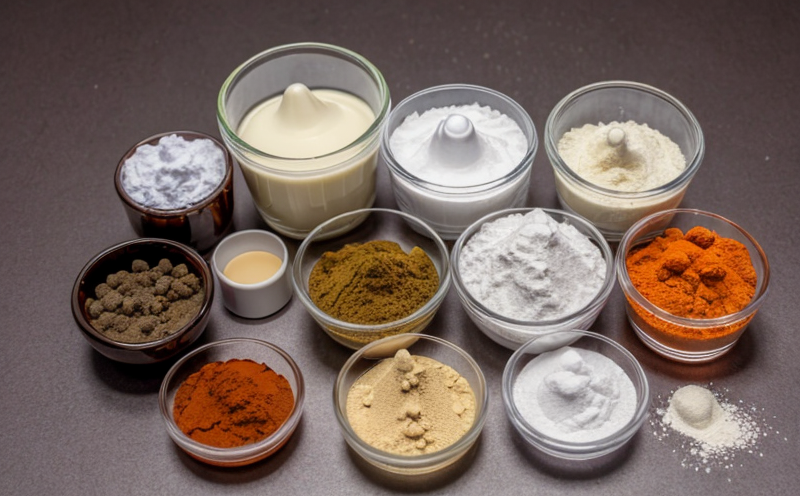Surface Tension Measurement Testing
In the pharmaceutical sector, surface tension measurement is a critical quality control parameter that ensures uniformity and consistency in excipients and formulation ingredients. This test is particularly important for ensuring product stability, shelf life, and overall efficacy.
The surface tension of an excipient or formulation ingredient can significantly affect its compatibility with other components during the manufacturing process. For instance, it influences how easily a substance mixes with solvents, affects emulsification processes, and impacts dissolution rates in pharmaceutical formulations. A precise measurement of surface tension helps to avoid inconsistencies that could lead to batch-to-batch variability or even product failure.
The testing procedure typically involves the use of specialized instruments such as the Du Nouy Ring method, Wilhelmy plate method, or pendant drop technique. Each method has its own advantages and is chosen based on the specific requirements of the sample being tested. The Du Nouy Ring method, for example, provides high accuracy but requires a more complex setup compared to the simpler methods like the Wilhelmy plate.
The testing process begins with careful preparation of the sample. This involves ensuring that the excipient or formulation ingredient is free from contaminants and is at the correct temperature and humidity level. The surface tension of water, which can vary significantly based on these factors, should be controlled to ensure accurate measurements. Once prepared, a small amount of the substance is placed into the instrument for measurement.
The instrument then applies a known force or observes the displacement of a hanging ring or plate to calculate the surface tension according to the Laplace equation. The results are typically reported in units of dynes per centimeter (dyne/cm) or millinewtons per meter (mN/m). These measurements provide crucial insights into how an excipient will behave in various conditions and during different stages of the manufacturing process.
Understanding surface tension is particularly important for ensuring that excipients and formulation ingredients meet strict regulatory standards. For example, USP , a chapter on water for pharmaceutical use, emphasizes the importance of controlling water quality to ensure consistent product performance. Surface tension testing can help manufacturers comply with such regulations by providing data that ensures all batches are within acceptable limits.
In summary, surface tension measurement is an essential step in the development and production of high-quality pharmaceutical products. It helps to maintain consistency across different batches, ensures compliance with industry standards, and ultimately contributes to the safety and efficacy of the final product.
Applied Standards
| Standard | Description |
|---|---|
| ASTM D5946 | This standard specifies the use of the Wilhelmy plate method for measuring surface tension. It provides detailed procedures and considerations for accurate measurement. |
| ISO 12777-1 | This international standard outlines the principles and methods for determining dynamic contact angles, which are closely related to surface tension in certain applications. |
| Standard | Description |
|---|---|
| USP | This United States Pharmacopeia chapter emphasizes the importance of water quality in pharmaceutical manufacturing. It indirectly impacts surface tension testing by ensuring that water used in these tests is of high purity. |
| IUPAC Recommendations | The International Union of Pure and Applied Chemistry provides recommendations for the conduct of surface tension measurements, which are widely followed in pharmaceutical laboratories. |
Quality and Reliability Assurance
The reliability of surface tension measurement is crucial to maintaining product quality. The use of advanced instrumentation, such as automated Du Nouy Ring or Wilhelmy plate systems, ensures consistent and accurate results. These instruments are calibrated regularly to maintain precision, and the data generated can be cross-verified with manual methods for additional accuracy.
Quality control measures extend beyond just the technical aspects of testing. Rigorous protocols for sample preparation and handling ensure that the tests reflect the true properties of the excipients or formulation ingredients being evaluated. This includes controlling environmental factors such as temperature, humidity, and air pressure to minimize variability in test results.
Compliance with relevant standards is also a key aspect of quality assurance. Laboratories must adhere to guidelines set by regulatory bodies like the FDA (Food and Drug Administration) and other national and international standards organizations. Regular audits and internal reviews help to identify and correct any discrepancies or issues that could affect test reliability.
Reliability in surface tension measurement is not just about technical precision; it also involves maintaining a consistent and reproducible process. This ensures that the data generated can be trusted and used effectively for decision-making purposes, whether it's during research and development or quality assurance.
Competitive Advantage and Market Impact
In today’s highly competitive pharmaceutical market, maintaining high-quality standards through precise surface tension measurement can give companies a significant edge. Consistent surface tension across batches ensures that products are reliable and consistent in performance, which is critical for patient safety and satisfaction.
By adhering to rigorous testing protocols and using advanced instrumentation, manufacturers can differentiate themselves from competitors who may not prioritize this parameter as thoroughly. This attention to detail can lead to a better reputation in the market, increased customer trust, and ultimately higher sales.
Surface tension data is also valuable for R&D teams, as it helps identify potential issues early on in the development process. For instance, if a formulation ingredient shows significant variability in surface tension, this could indicate problems with its chemical composition or purity that need to be addressed before full-scale production begins.
In addition, compliance with international standards and regulations can open up new markets and opportunities for pharmaceutical companies. Meeting these requirements demonstrates commitment to quality and safety, which is essential for gaining the trust of regulatory bodies and potential customers worldwide.





